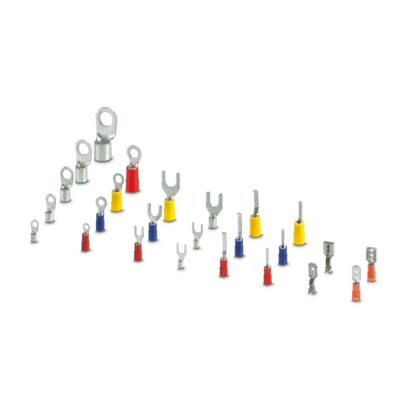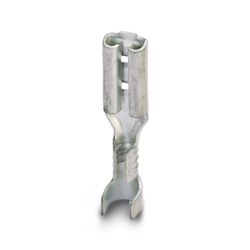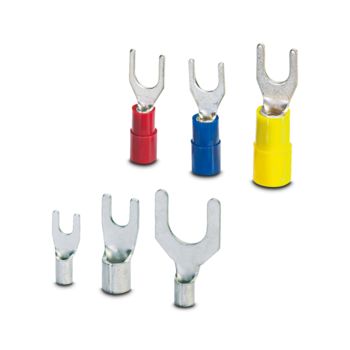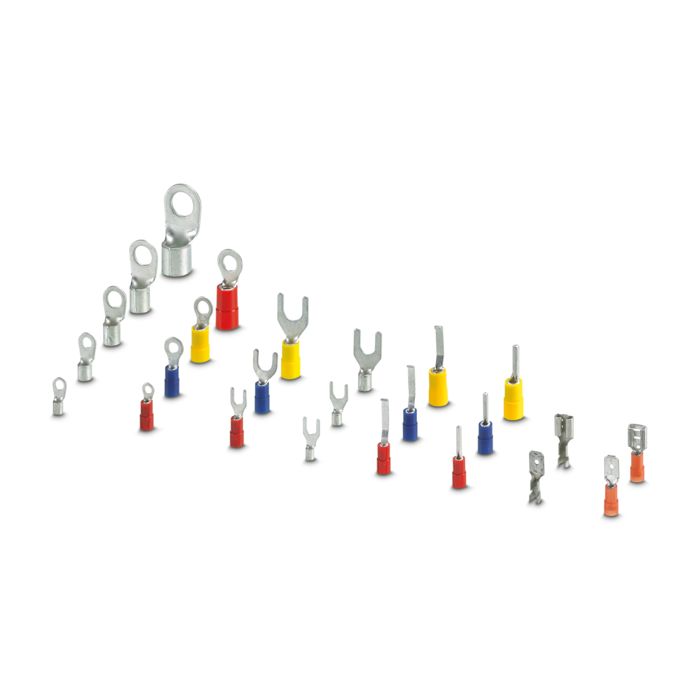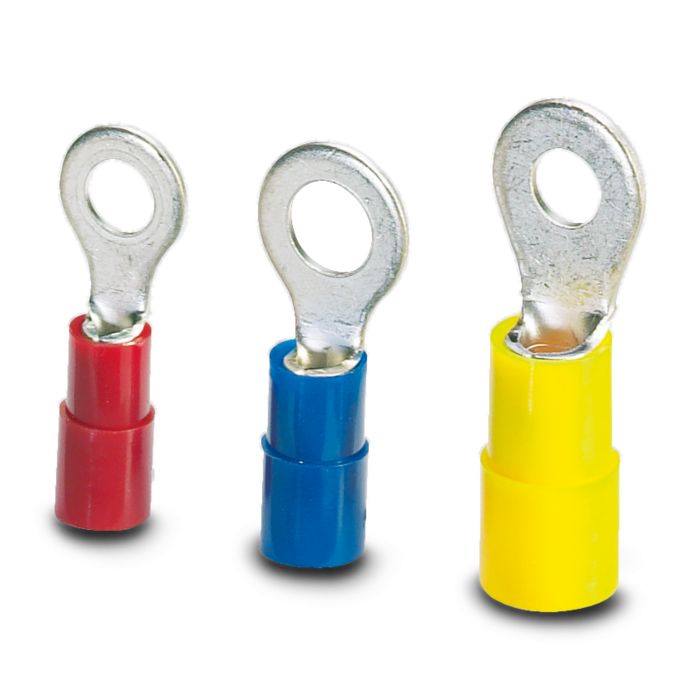
Ring cable lugs enable a secure connection between conductors and screw connections, and offer a wide range of applications (e.g., terminal blocks).
- In accordance with DIN 46234 (non-insulated cable lugs)
- Available in various variants (insulated, non-insulated, with additional crimp zone)
- Bolt connections from M2.5 to M16
- Conductor cross-sections from 0.5 to 240 mm²

